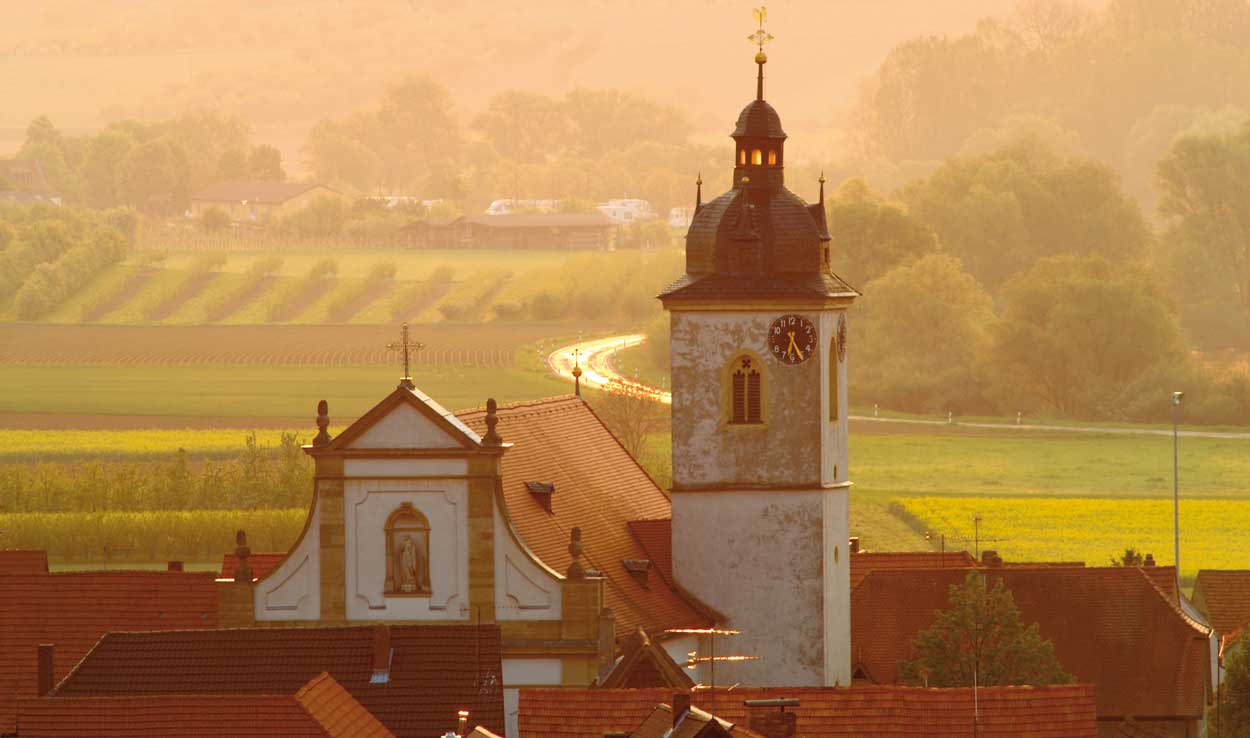
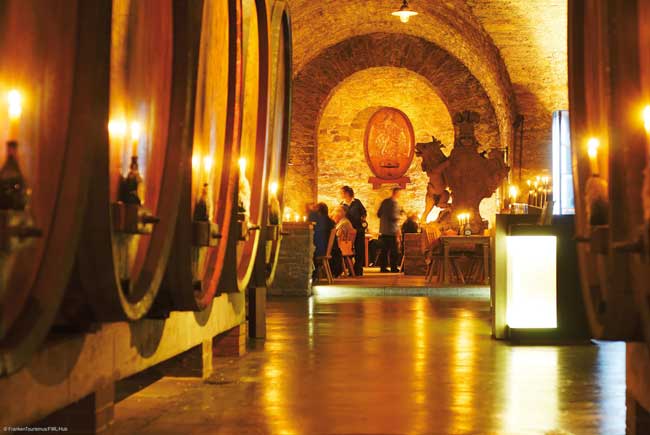
It’s dark here in the cellars, but tall candles mounted on huge wine casks light our way. We’re deep in the Staatlicher Hofkeller, the cellars of the Bavarian state winery below Würzburg Residenz Castle in Franconia.
While Germany may be known for its beer, in this region of Bavaria, wine heritage runs deep. Wine has been cultivated in Franconia for more than a thousand years, and vineyards cover the hills and countryside.
Winemaking families that have honed their craft for centuries can still be found in the region’s medieval villages and towns.
The obvious treasure of Franconia is its white wine, which dominates the region. The most popular local favorite is Silvaner, a fruity wine that is perfect on a warm, summer day.
Wine here is bottled in the Bocksbeutel, a short round bottle that is uniquely Franconian.
What is Franconia?
You won’t find Franconia on a map, and there is no political unit called Franconia. Instead, it’s a cultural identity that reaches back to the day when Germany was many tribes.
The Franken were a tribe that eventually became a separate duchy of the Holy Roman Empire.
Today, Franconia is part of the German state of Bavaria. Yet its unique heritage is still evident in its dialect, culture and traditions.
Ask almost any Franconian and he or she will tell you, with a smile, that they are Franconian first, and Bavarian second.
In other parts of Germany, locals go to the beer garden for relaxation. Here in Franconia, folks head to the wine cellar. It only seems fitting then, to be sitting in the cellars of a beautiful castle drinking Silvaner.
The Staatslicher Hoffkeller has been making wine since 1128, making it one of the oldest wineries in the world. With a wine heritage like that, you can bet they know what they’re doing.
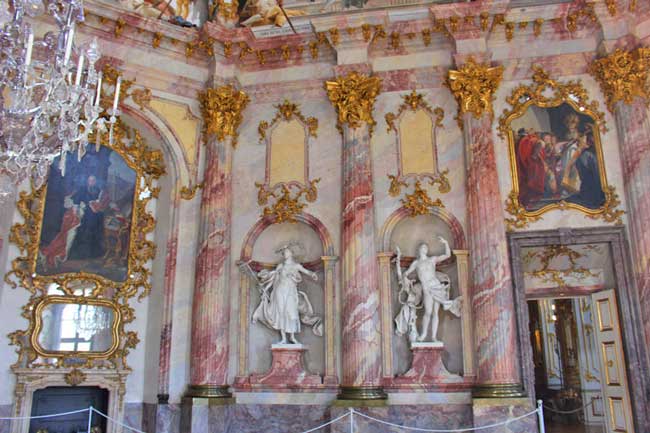
Würzburger Residenz
The stately castle above us is a UNESCO World Heritage site. Once home to powerful prince bishops who ruled this region in the mid-1700s, the Residenz offers a glimpse into a regal past.
Intricate frescoes and over-the-top architecture are the norm in this baroque and rococo masterpiece. Just walking up the elaborate staircase and viewing the giant fresco by Venetian artist Tiepolo is worth the € 7.50 price of admission.
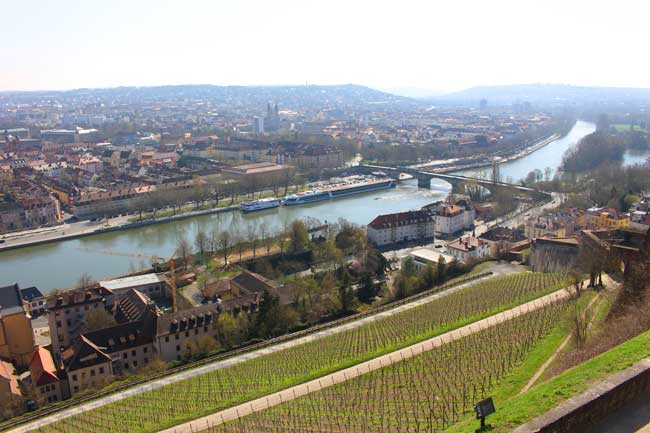
Another must-see in Würzburg is Marienberg Fortress, which sits high on a hill overlooking the city.
The Fortress’s impressive museum (Museum für Franken) includes a world-famous collection by medieval woodcarver, Tilman Riemenschneider.
But my favorite part is the Fortress garden, which offers an incredible view of this town of 125,000 residents.
Much of the city was destroyed by bombing in March of 1945, but the townspeople worked diligently to restore the city’s baroque architecture.
In a small room in city hall, I find an exhibit detailing those dark days. It tells of individuals who helped make a difference, including the citizens of the small American town called Faribault, Minnesota.
Faribault helped in relief efforts after the war, and eventually adopted the town of Würzburg. The two sister cities have close relations to this day.
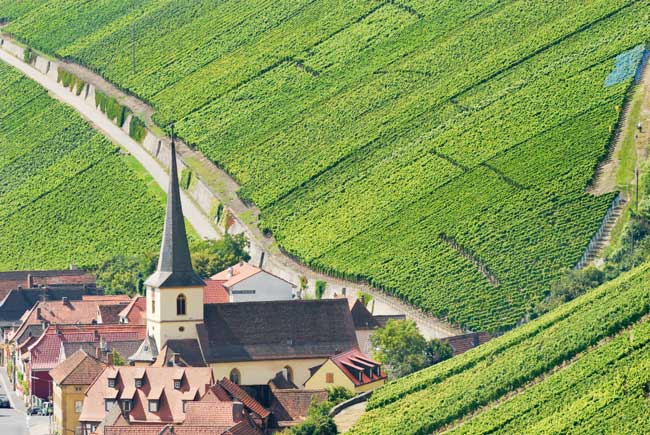
Traveling in Franconia
The Main River winds through the heart of Würzburg, and the city is a popular stop on river cruises. While many travelers reach this region by cruise ship, it’s just as easy to come by car or train.
I flew from the United States to Frankfurt, and then it was just a 2.5-hour drive to Franconian Wine Country.
We had started off our visit with a stop in Volkach, a village of 9,000 surrounded by vineyards. Generations of winemakers still make their home here. The Max Muller Winery is one example.
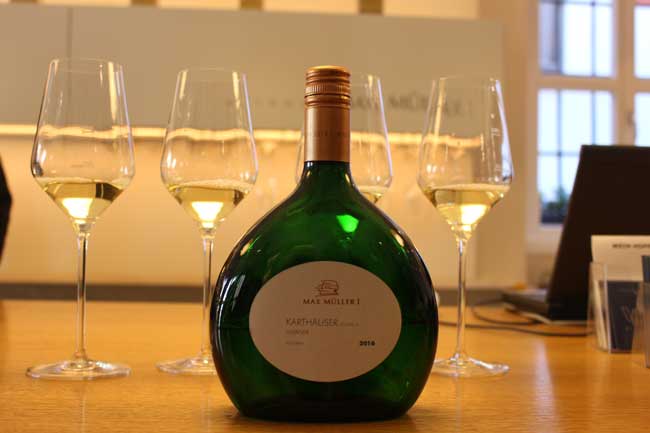
While their tasting room is contemporary, their classical wines combine time-honored traditions with modern winemaking.
Wines are stored in the historical baroque cellars below the main house.
Some 7,000 winemaking families farm vineyards in Franconia today. Most have small plots of land, some on steep gradients. Though labor intensive, this steep land produces high quality wine.
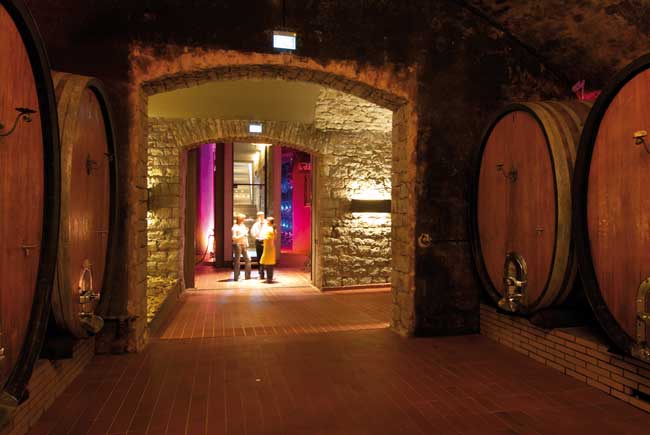
Winzer Sommerach
Though small winemakers can struggle with distribution, in the nearby town of Sommerach, they have an excellent solution.
Founded in 1901, Winzer Sommerach is a winemaking co-op that allows winemakers to create and distribute their wine.
Sommerach has a modern tasting room, and outdoor patio seating where you can enjoy your wine in the summer air.
There are so many wines available for sale at Winzer Sommerach that it’s hard to choose which ones to buy.
But after touring their large baroque cellar and tasting multiple wines, I purchased three Bocksbeutels of Silvaner. I’m sure it won’t be the last bottles I pick up on this trip.
I’ve learned to bring a good suitcase when I travel to Germany. That way, I can bring home pastries, chocolates and other things that I have come to love in Germany.
I’m just a few days into my trip, and already my suitcase is full.
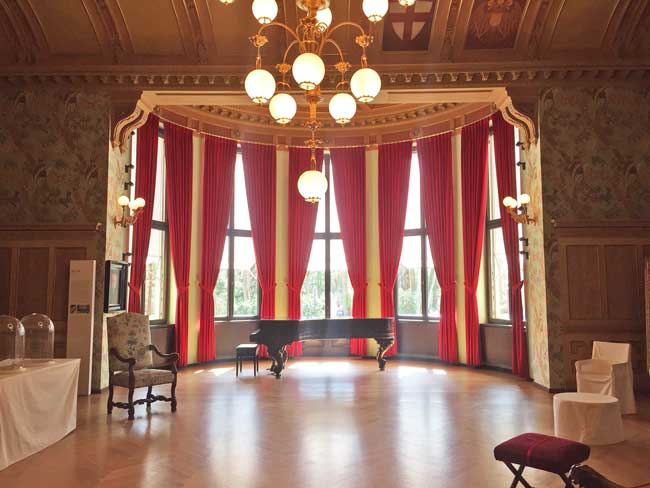
Travel in Bayreuth
Great music should accompany fine wine. Enter Bayreuth, a small Franconian city best known as the home of 19th-century German composer Richard Wagner.
Wagner was drawn to Bayreuth for its musical prominence, and it’s here that he established the Festspielhaus, an opera house where he showcased his work.
The Bayreuth Festival is a music festival held annually, presenting performances of Wagner’s operas. Wagner’s home is open to visitors interested in learning more about the life of the composer.
But while many come to Bayreuth for Wagner, I’m most excited to see the Margravial Opera House.
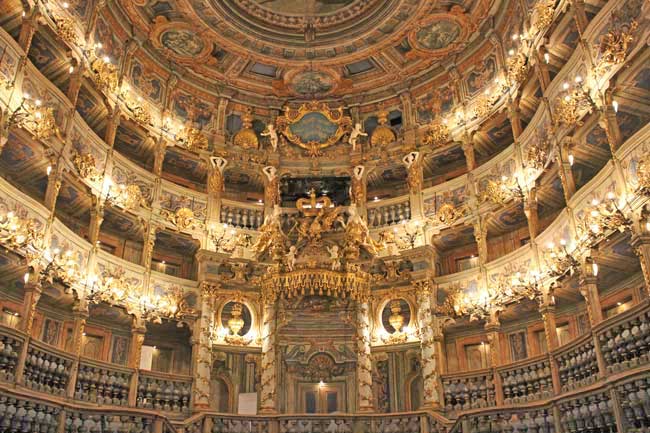
Margravial Opera House
Walking into the historical theatre to see the Italian opera Artaserse, I’m so awed that I must stop and look around. From floor to ceiling, every inch of the auditorium is stunning.
My American eyes are not used to such exquisite Italian baroque architecture. Indeed, it feels a bit like I’ve landed in a fairy tale.
Built in 1746-1750 by Princess Wilhelmine for her daughter’s marriage, it has been called the most beautiful baroque theatre in Europe.
Named a UNESCO World Cultural Heritage Site, the Margravial Opera House has been beautifully preserved.
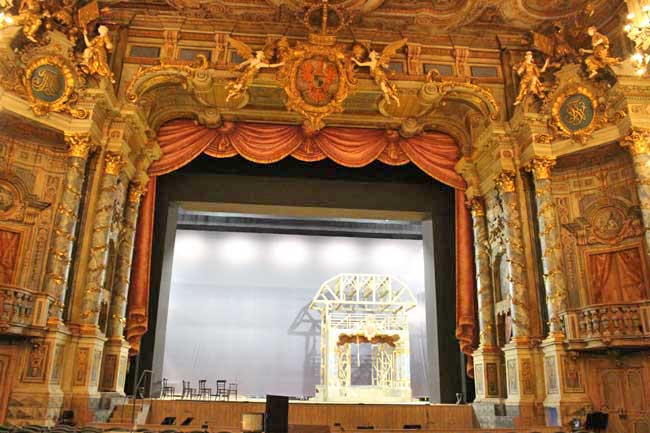
In 2012, work began to carefully preserve and restore the opera house. Some 93,000 hours of restoration work later, the Margravial Opera House reopened in 2018.
With so many intricate wood carvings and artistic creations, it’s hard to know where to look.
While the opera on stage is very good, my eyes keep going back to the theatre itself. It’s not every day that you can sit for a few hours, surrounded by such a beautiful creation.
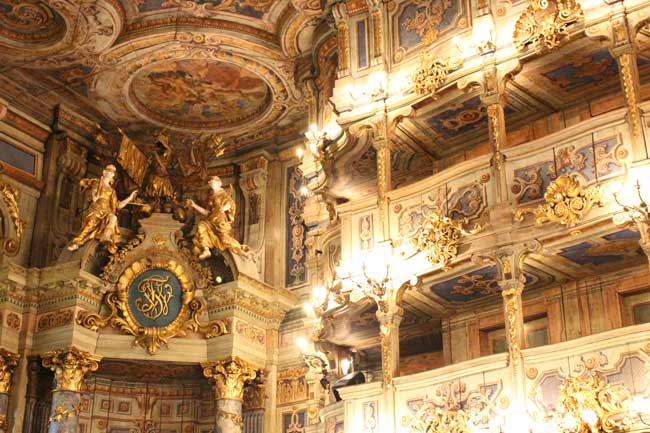
Hotel Goldener Anker
After the opera, it’s just a two-minute walk to my room at the Hotel Goldener Anker. This historic hotel has been in the same family since 1676.
Current manager, Eva Graf, is the thirteenth generation to run the hotel. She grew up in the hotel, she says, and is now raising her own three children there.
The family has hosted royals, famous writers like Mark Twain, musicians like Strauss and Tchaikovsky and even modern celebrities like the Scorpions.
It seems a fitting place to stay when visiting Bayreuth.
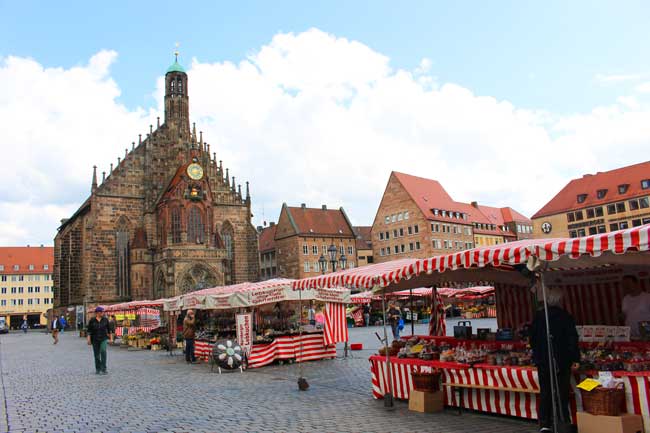
Nuremberg Past and Present
Nuremberg is perhaps the best-known city in Franconia, and it’s my last stop. Nuremberg’s Christmas market is world-renowned.
Each year, travelers from around the world flock to the Christkindlesmarkt on Hauptmarkt in the old quarter.
I’m here in the summer, though, and today the square is filled with vendors selling farm-fresh produce.
I catch the faint scent of gingerbread in the breeze. That’s because Wicklein Lebkuchen, one of Nuremberg’s most famous gingerbread makers, is just steps away.
I inhale deeply as I walk into the shop. The sweet smell is intoxicating.
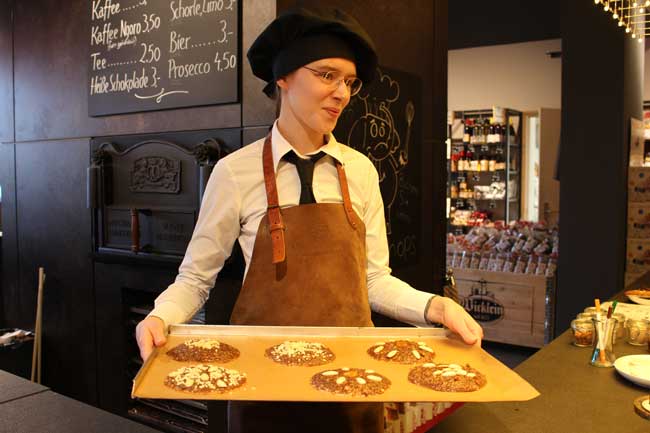
Nuremberg was once an important stop along the Spice Route, and spices like cinnamon and ginger were an important ingredient in local foods.
Today, I’m going to learn about that culinary heritage during a Gingerbread Workshop at Wicklein Lebkuchen.
For just €14,90, you can make and decorate your own Elisenlebkuchen (a large gingerbread cookie), while learning from an expert.
Decorating the cookie is especially fun, but the best part comes as I eat it, still warm, walking across the town square.
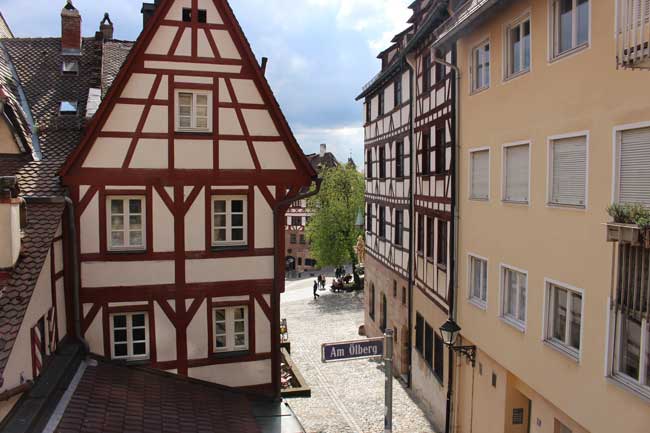
Old Town Nuremberg
Though Nuremberg is large (500,000 residents), it’s best to explore its historic inner core by foot.
Much of the city was destroyed during WWII, but its medieval core has been rebuilt in original style. More than 3.5 miles of the original city wall are still standing.
We stop for traditional Nuremberg Bratwurst, thin grilled sausages which are a specialty of Nuremberg, at the Artisan Courtyard, an artisan village near the City Gate.
Then we make our way through the shopping quarter, which has one of the biggest pedestrian shopping areas in Europe.
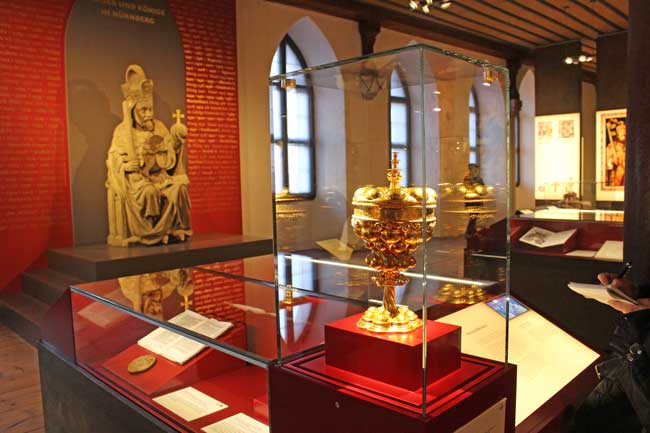
Imperial Castle in Nuremberg
Eventually, we make our way up the hill to the Imperial Castle on the northern edge of the Altstadt.
During the Middle Ages, the castle was an important part of the Holy Roman Empire. It housed the Empire’s head of state.
A detailed exhibition called “Emperor-Empire-City” shows how the Holy Roman Empire worked.
An Obligation to the Past
Nuremberg has a complex and difficult history. Beginning in 1927, the National Socialists used it for their party rallies.
When Hitler seized power, he built large Nazi parade grounds in Nuremberg. From here, Nazi party members spewed their murderous plans across Europe.
That is why the city was bombed without mercy in January 1945. At the end of the war, Nazi war criminals were tried here before the International Military Tribunal.
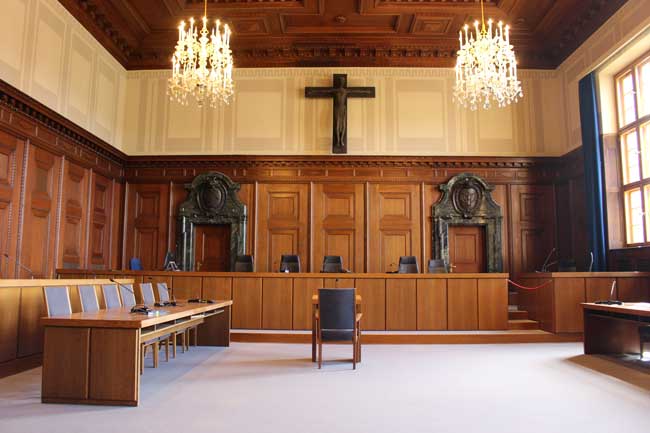
Nuremberg Trials
Today, you can visit the courtroom where the Nuremberg Trials took place. Still a working courtroom, the building also houses the Memorium Nuremberg Trials museum, which documents what took place here.
The “Fascination and Terror” exhibit at the Nazi Party Rally Grounds does not whitewash the city’s Nazi past.
Instead, as our guide tells our group, “We feel a self-imposed commitment to understanding how it happened and ensuring that it does not happen again.”
The museum works to communicate the causes, context and consequences of power during the Nazi era.
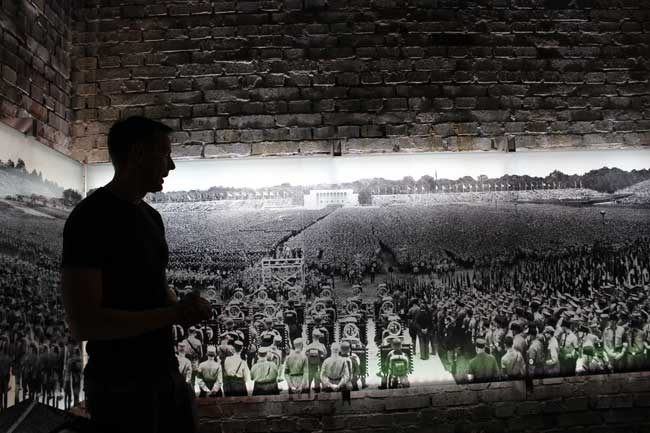
“It’s important to understand the techniques Hitler used to gain power,” our guide says as we go through the exhibits. “He created scapegoats and then blamed all the problems on them.
He made people fear each other, and then painted himself as the messiah, giving simplistic solutions to complex problems.”
“The exhibits aren’t preaching,” our guide says, “they are explaining. It’s important to understand how it happened and how it could happen again anywhere in the world.”
These are all good lessons, especially in current times.
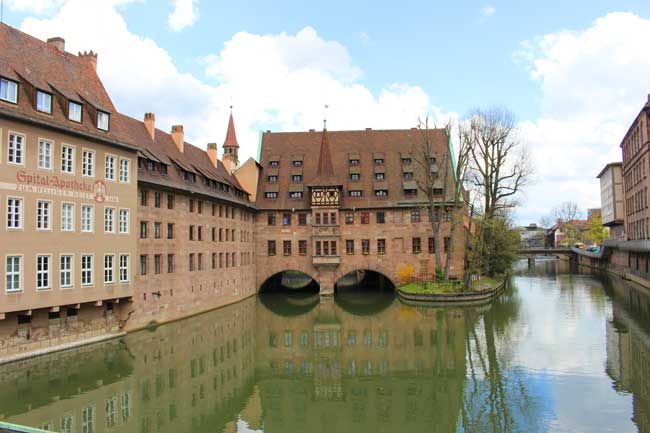
City of Peace and Human Rights
Nuremberg has made a formal commitment to promoting peace and calls itself a “City of Peace and Human Rights.
” Every other year, it awards the Nuremberg International Human Rights Award to someone working for human rights.
I see that commitment first-hand while walking back to my hotel. It’s dusk, but I can still see the inscriptions as I walk through the “Way of Human Rights” in front of the German National Museum.
Created by Israeli artist Dani Karavan, the articles of the United Nations Universal Declaration of Human Rights are listed in many languages on tall white pillars.
I stop and read as many as I can, and my heart is lightened as I do.
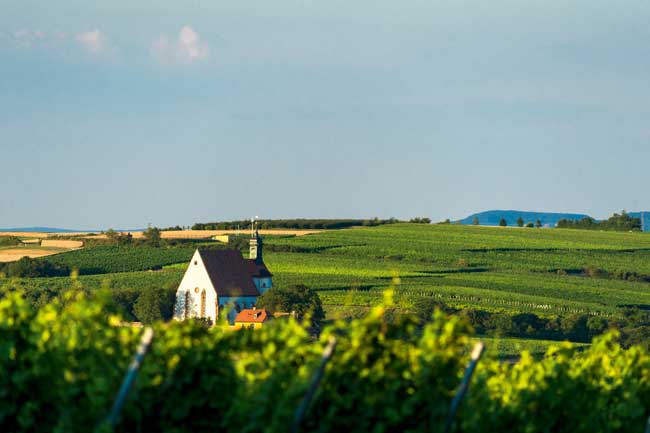
Franconian Wine Country
Summer in Germany is something special, especially in Franconian Wine Country. As I head out of town the next morning, I pass more lush green vineyards.
Soon it will be time to harvest, and another successful yield will be taken from the local vineyards.
Four bottles of Franconian wine lie carefully wrapped in my suitcase. Someday, I’ll pull them out at home to enjoy, a perfect reminder of my time in Franconian Wine Country.
If You Go
Bavaria Tourism
www.Bayern.by
Franconia Tourism
www.frankentourismus.com
Franconian Wine Country
https://en.franken-weinland.de/
Where to Stay in Franconia
There are many good inns, hotels and resorts in Franconia. Here are the ones I stayed at, and I can recommend each of them.
Volkach
Hotel Vier Jarheszeiten
Hauptstraβe 31
97332 Volkach
www.hotel-vierjahreszeiten-volkach.de
Würzburg
Best Western Premier Hotel Rebstock
Neubaustr. 7
97070 Würzburg
www.rebstock.com
Bayreuth
Hotel Goldener Anker
Opernstraβe 6
95444 Bayeuth
https://anker-bayreuth.de/index_en.html
Nuremberg
Sheraton Carlton Hotel
Eilgutstraβe 15
90443 Nuremberg
www.sheratonnuernberg.com

Author Bio: Janna Graber has covered travel in more than 40 countries. She is the editor of three travel anthologies, including A Pink Suitcase: 22 Tales of Women’s Travel, and is the managing editor of Go World Travel Magazine.
- How to Renew a US Passport Quickly and Affordably - April 19, 2024
- 6 Reasons to Visit Portland, Maine (+ Travel Tips) - April 18, 2024
- Cruising with Discovery Princess on the Mexican Riviera - March 30, 2024
